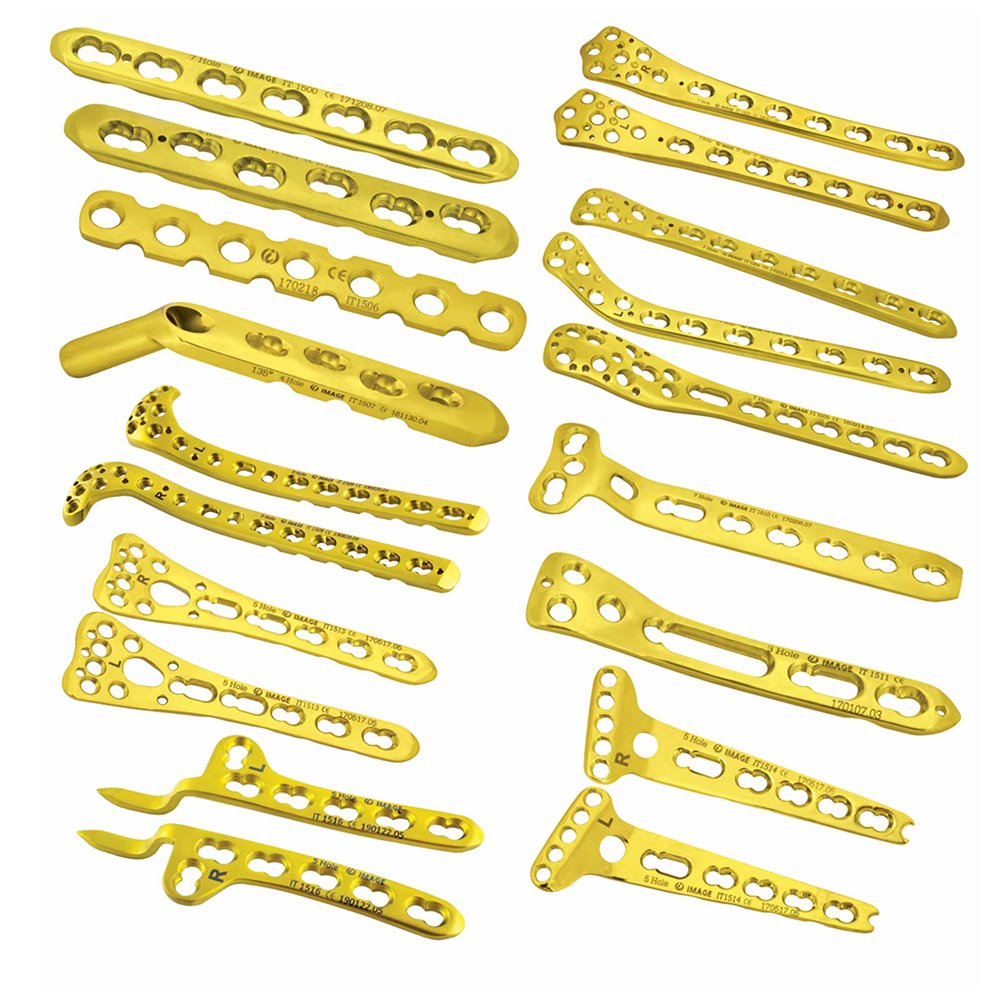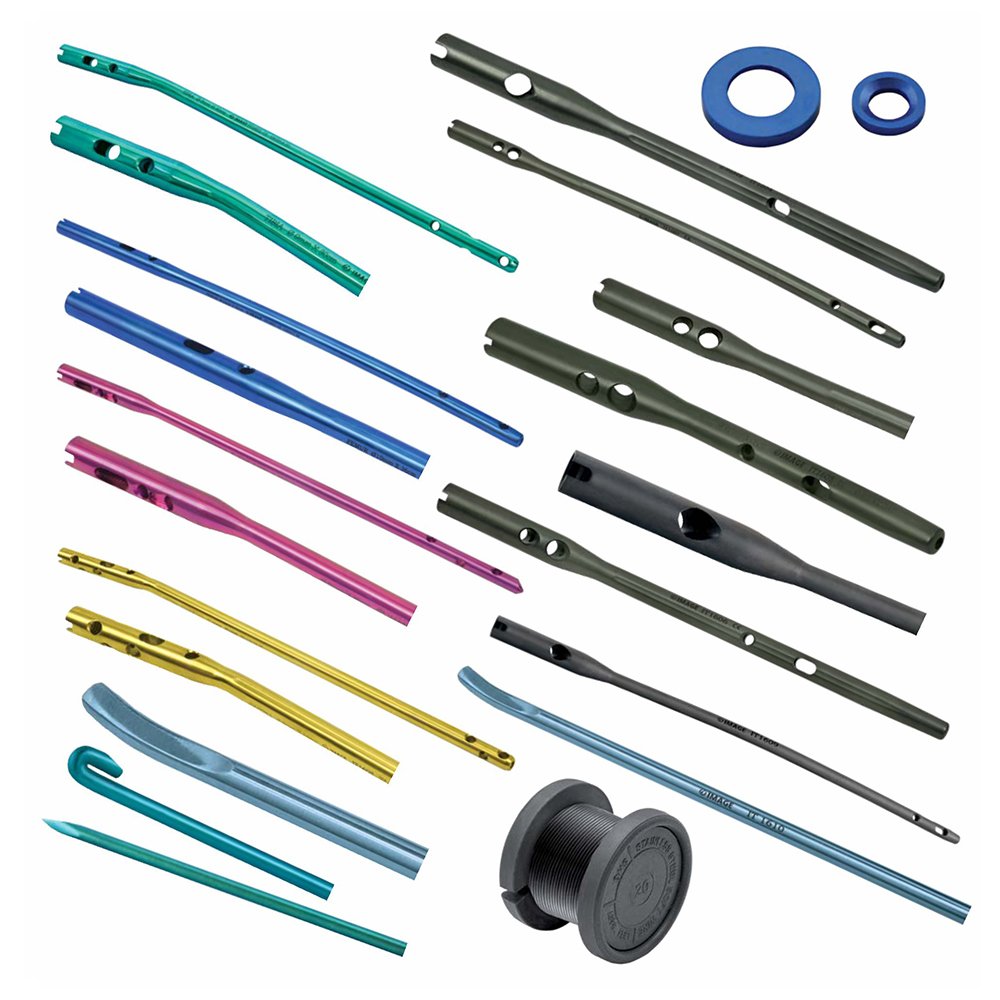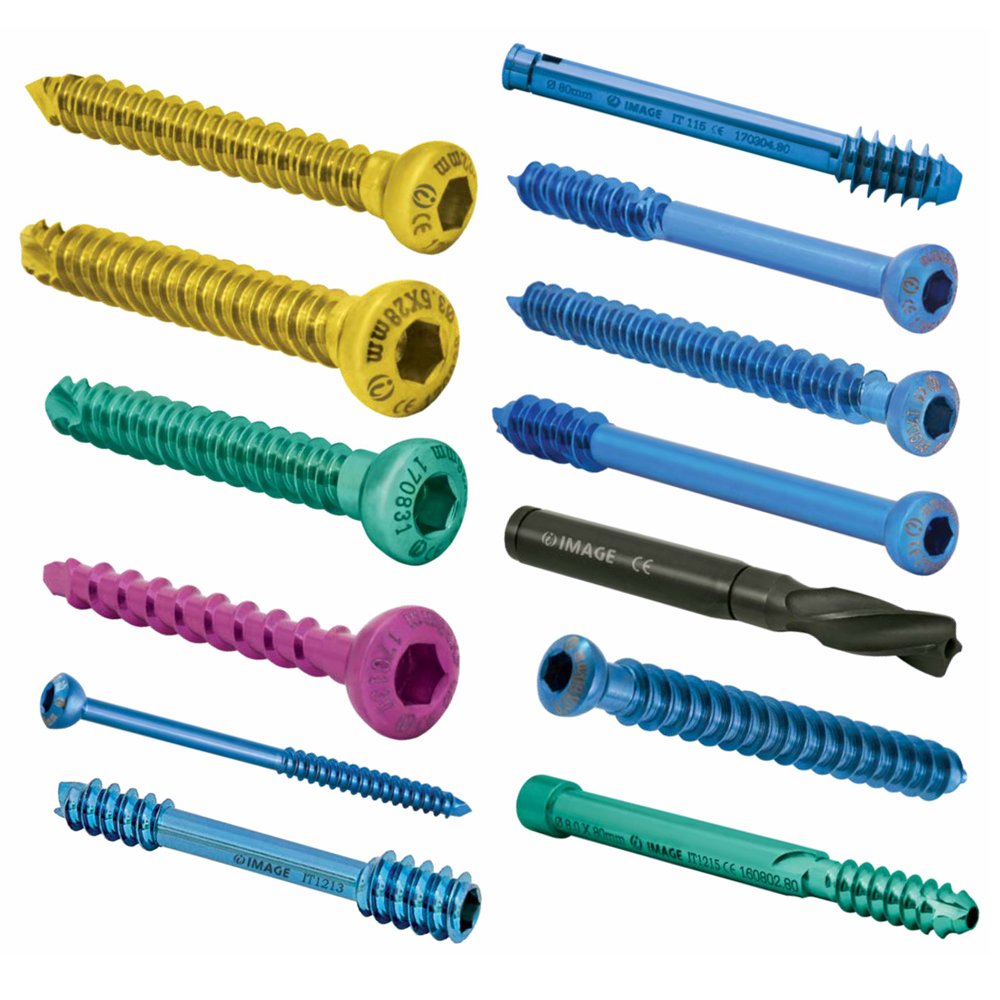Material Composition:
Titanium Alloy: Locking bone plates are typically manufactured from titanium alloy. This material is chosen for its high strength, corrosion resistance, and excellent biocompatibility. Titanium’s biocompatibility reduces the risk of adverse reactions and facilitates bone integration.
Locking Mechanism:
Locking bone plates feature threaded holes that correspond to the specialized threads on locking screws. This locking mechanism creates a fixed-angle construct, preventing screws from toggling within the plate and providing additional stability.
Types of Locking Plates:
Compression Locking Plates: Designed to compress bone fragments together, promoting stability.
Bridge Locking Plates: Used to bridge fractures and maintain alignment.
Buttress Locking Plates: Reinforce the weakened side of a bone, often used in comminuted fractures.
Periarticular Locking Plates: Designed for fractures near joints, providing stable fixation in challenging anatomical regions.
Hole Patterns:
Locking bone plates have an array of threaded holes that accommodate locking screws. The design allows for flexibility in screw placement and promotes optimal bone alignment.
Plate Contouring:
Some plates are anatomically contoured to match the curvature of specific bones, improving the fit and reducing the risk of soft tissue irritation.
Thickness and Profile:
Locking plates are available in different thicknesses and profiles to suit the biomechanical demands of specific anatomical locations and patient demographics.
Surface Finishes:
Some plates undergo surface treatments or coatings to enhance biocompatibility and promote bone integration.
Sterilization:
Like other orthopedic implants, locking bone plates are sterilized before use to maintain aseptic conditions in the surgical environment.
Advantages of Titanium:
Biocompatibility: Titanium’s biocompatibility reduces the risk of inflammation or rejection by the body.
Corrosion Resistance: Titanium resists corrosion in biological environments, contributing to long-term stability.
Strength-to-Weight Ratio: Titanium offers high strength with a relatively low density, making it an ideal material for orthopedic implants.
Radiopacity:
Titanium locking bone plates are often radiopaque, facilitating their visualization on medical imaging such as X-rays.






Reviews
There are no reviews yet.